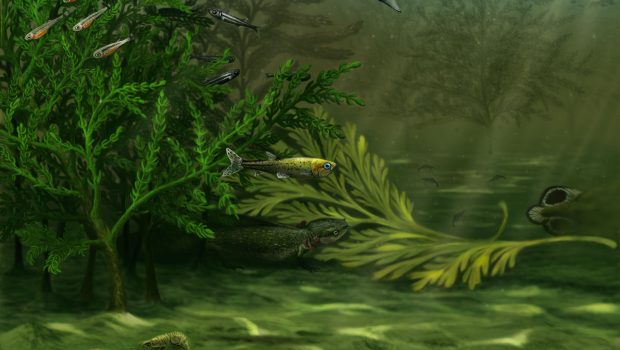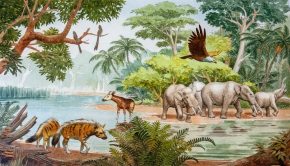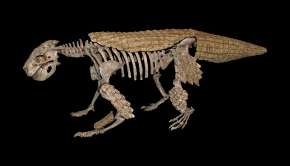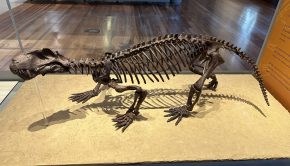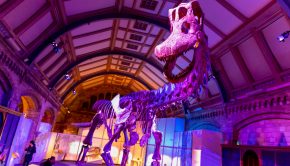Episode 72: Las Hoyas
Las Hoyas is a Early Cretaceous lagerstätte (site of special preservation) located close to the city of Cuenca, Spain. In this episode, we welcome Ángela Delgado Buscalioni and Francisco José Poyato-Ariza, both from the Universidad Autónoma de Madrid, to discuss the details of this remarkable site. Angela and Francisco have recently edited a comprehensive overview of the Las Hoyas site.
Like most lagerstätten, Las Hoyas is most famous for its vertebrate fossils, but what other taxa can we find there? What was the palaeoenvironment like? And which processes have governed the preservation of the fossils?
Part A:
Podcast: Download (Duration: 34:44 — 48.0MB)
Part B:
Podcast: Download (Duration: 31:40 – 43.5MB)
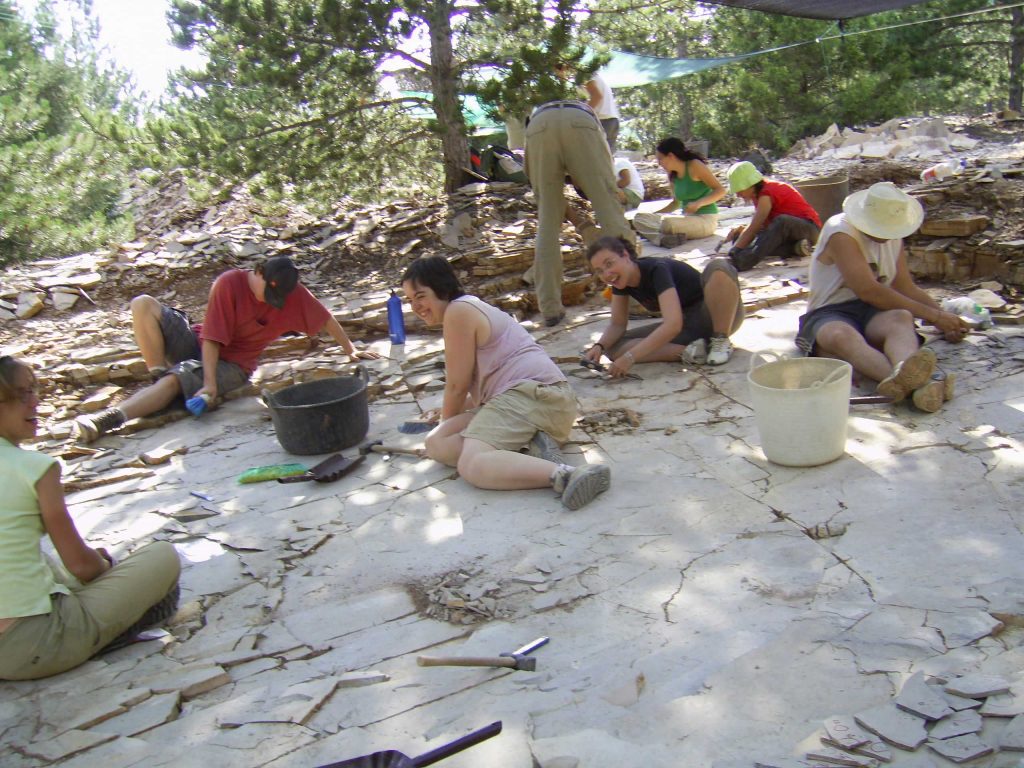
Field works at Las Hoyas showing team of students on an exposed surface of laminated limestone in July 2007. Photo A.D. Buscalioni.
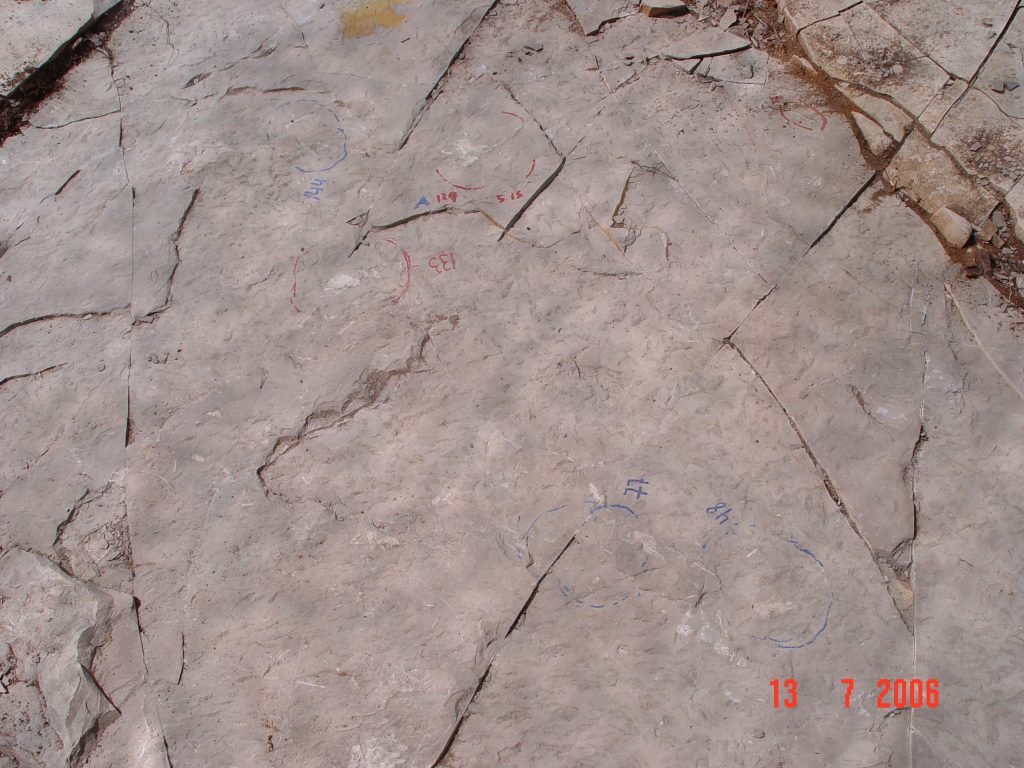
Detail of an excavating surface with in situ notation for retrieval of taphonomic data (field cards), July 2006. Photo A.D. Buscalioni.
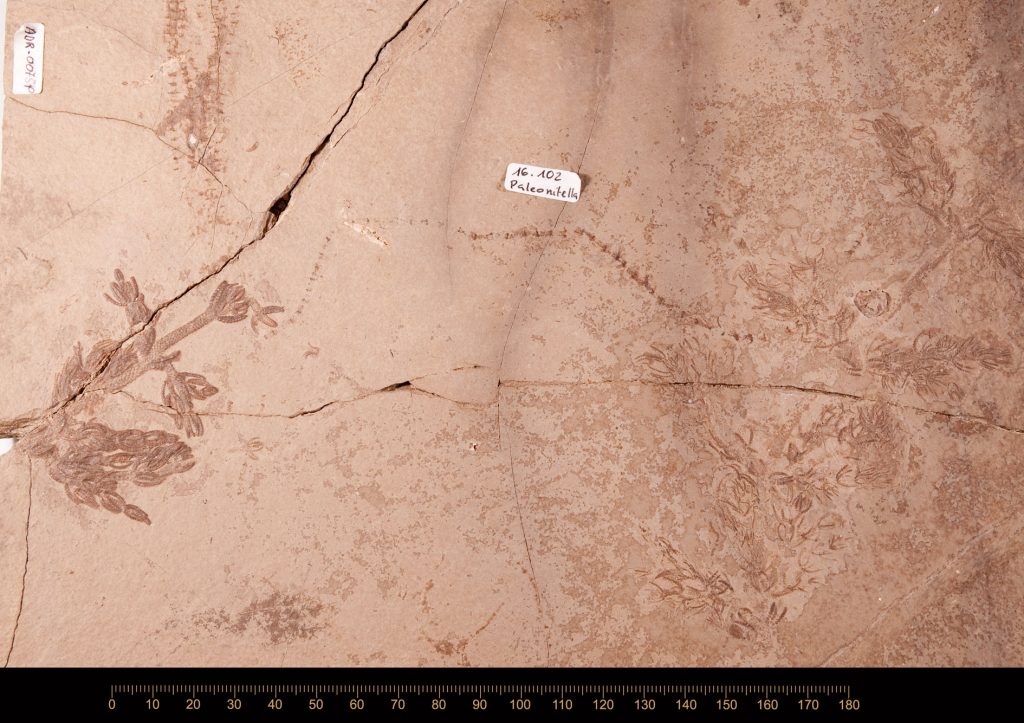
Charophyte algae are preserved at Las Hoyas as complete vegetative apparatus. This slab shows three different genera of them. Photo J. A. Gracia, with permission from Verlag Dr. Friedrich Pfeil, München.
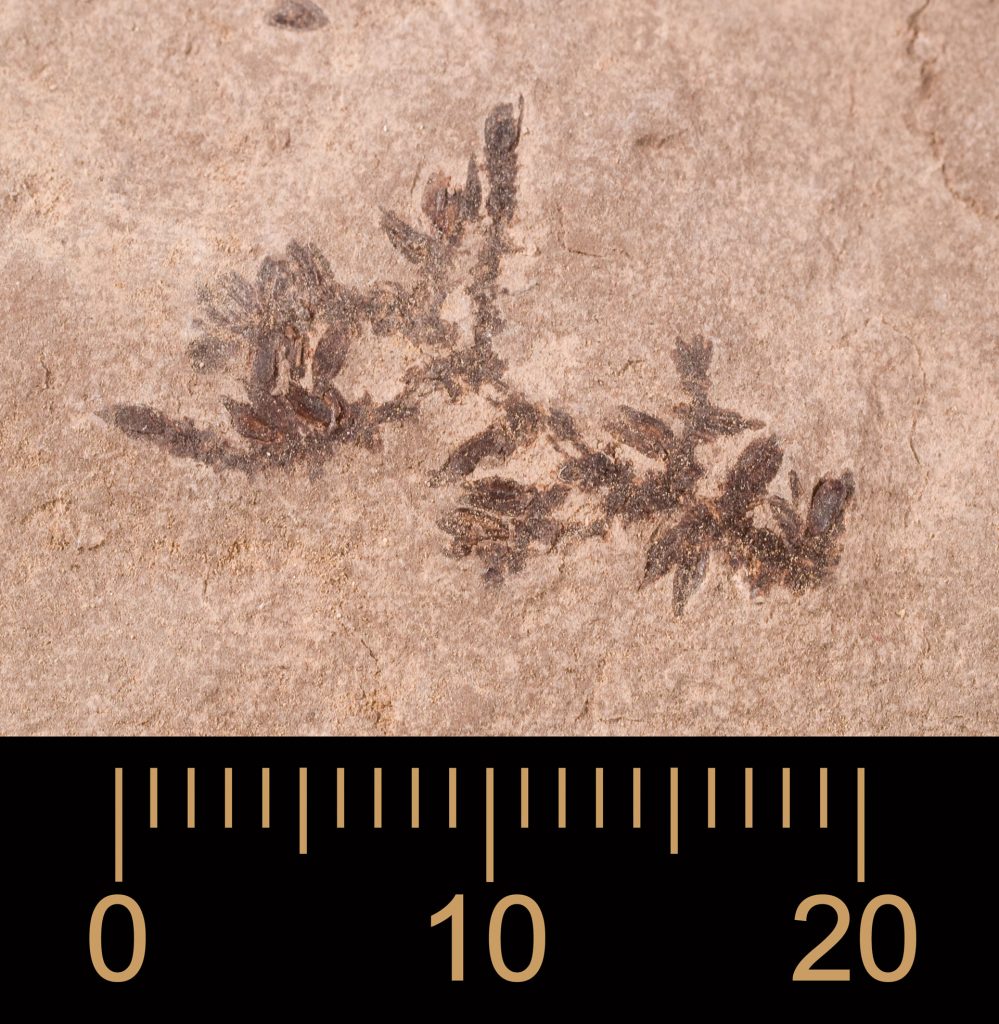
Montsechia vidali, an extremely abundant aquatic angiosperm. Notice the abundant fruits attached on this small specimen (MCCM-LH-26811b, Museo de Paleontología de Castilla-La Mancha, Cuenca, Spain). Photo J.A. Gracia, with permission from Verlag Dr. Friedrich Pfeil, München.
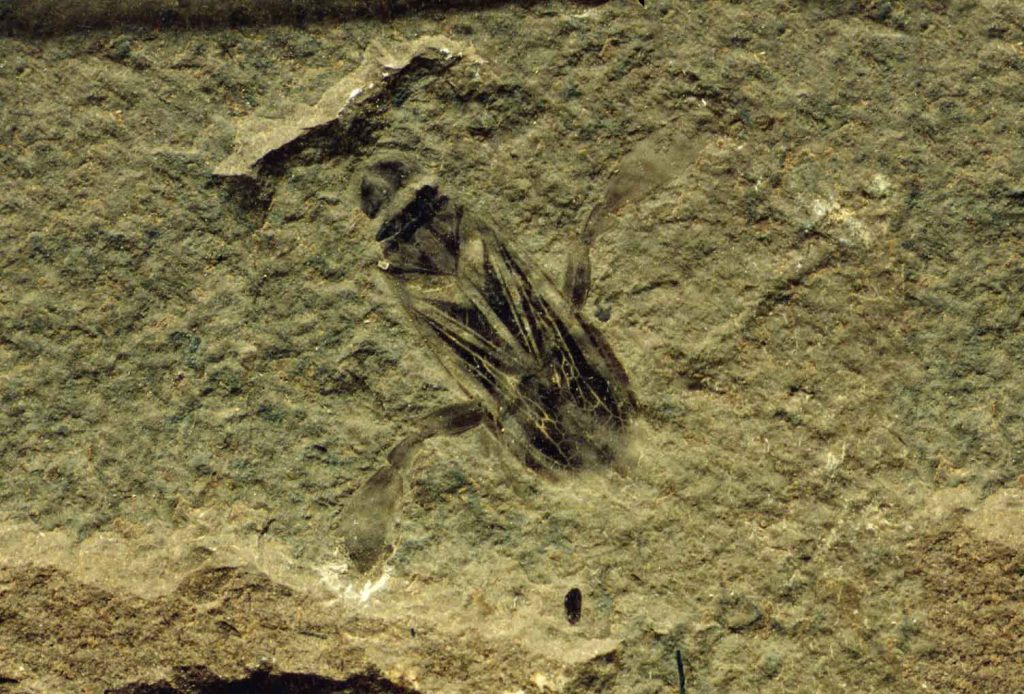
Iberonepa romerali, an aquatic heteropteran insect. Recent representatives of this family (Belostomatidae), known as backswimmers, are very common in continental waters. They are very abundant as fossils in Las Hoyas, including hundreds of specimens from which a complete growth series can be ascertained. They roughly range from 0,5 to 1,5 cms in body length. Photo A.D. Buscalioni.
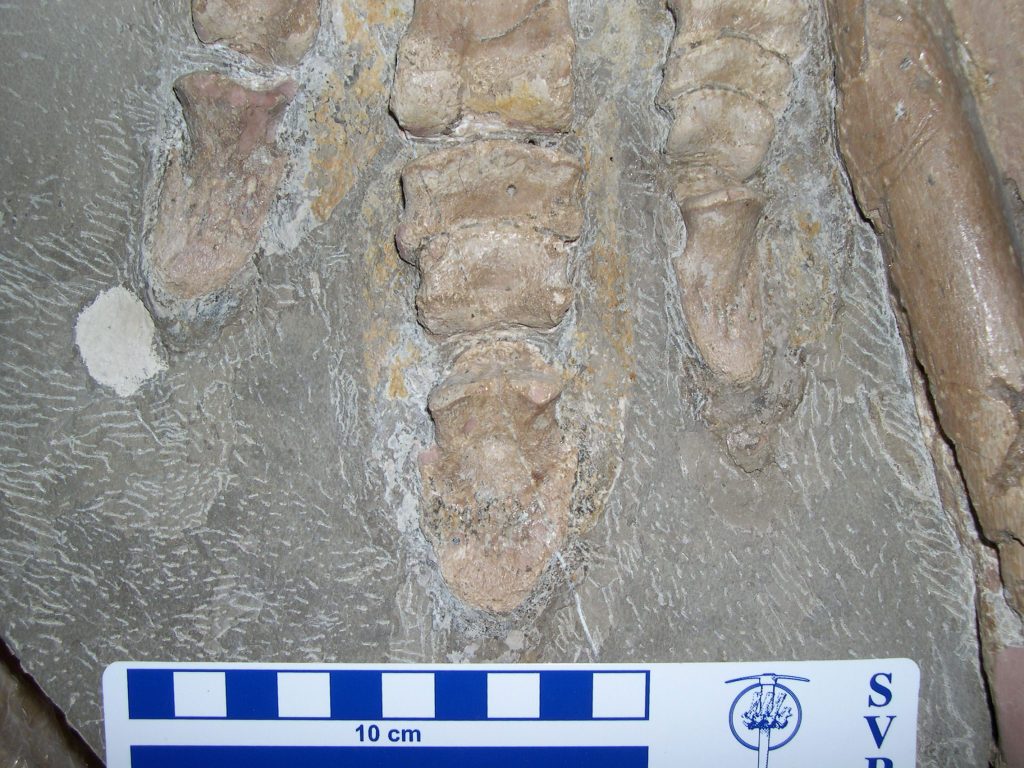
Foot of the dinosaur cf. Mantellisaurus showing skin preservation as white and yellow colour contouring the digits, specimen MCCM-LH-30677 (Museo de Paleontología de Castilla-La Mancha, Cuenca, Spain). Photo J.A. Gracia, with permission from Verlag Dr. Friedrich Pfeil, München.
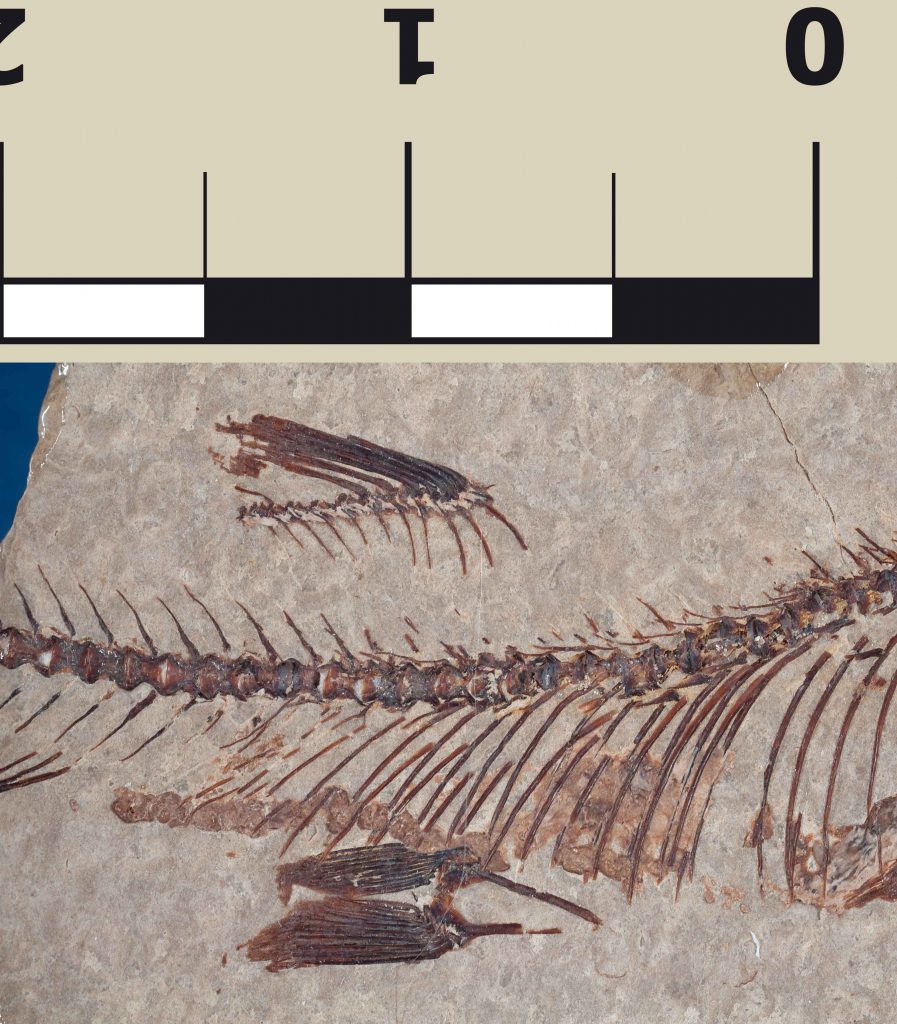
Detail of the abdominal cavity of a teleostean fish showing gastrointestinal content, specimen MCCM-LH-11101 (Museo de Paleontología de Castilla-La Mancha, Cuenca, Spain). Photo J.A. Gracia, with permission from Verlag Dr. Friedrich Pfeil, München.
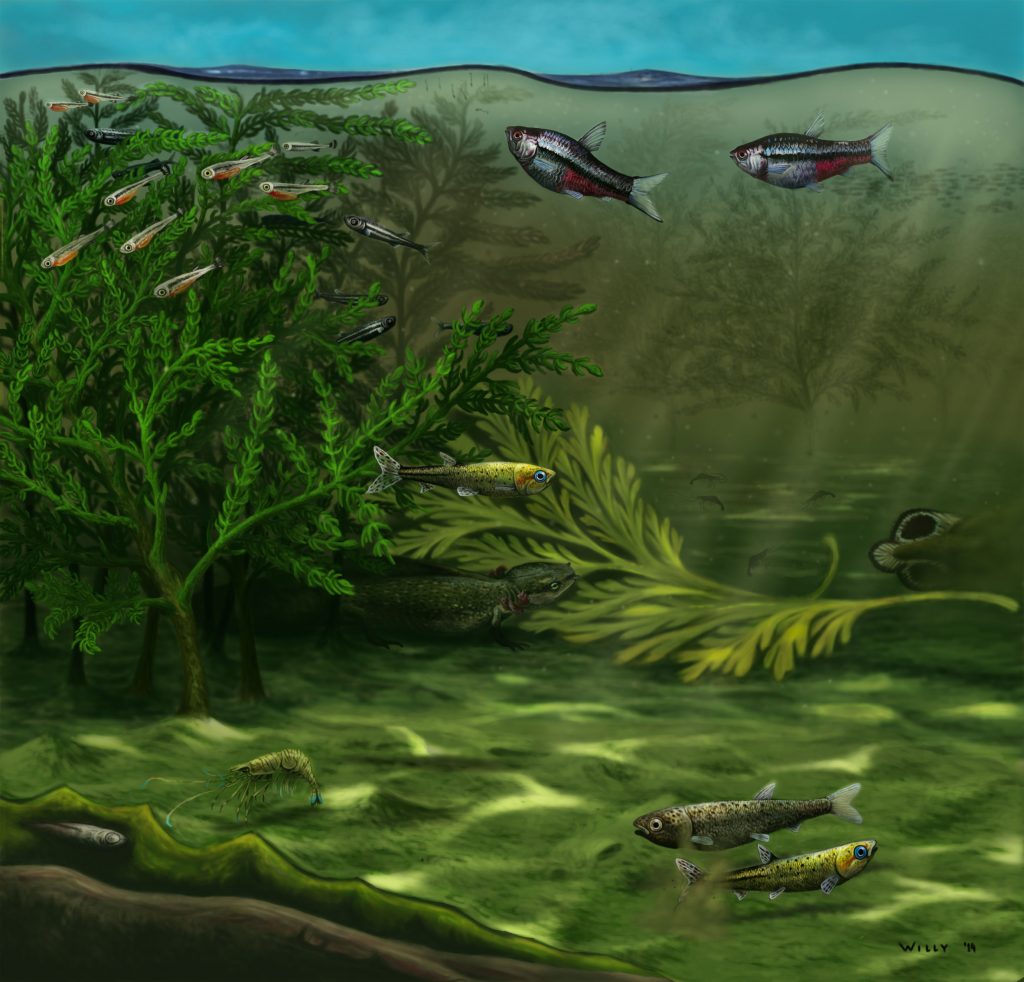
Some parts of the waters from Las Hoyas are interpreted as fish nurseries, as the association contains very numerous baby fishes (top left). There are also adults of small fishes like Gordichthys (top right) and Rubiesichthys (center plus bottom right). A coelacanth tail corresponds to a baby one swimming away (centre right) and a perennibranchiate salamander is observable among the vegetation formed by the angiosperm Montsechia (centre). Taphonomic inserts include some fallen partial remains of the terrestrial fern Ruffordia on their way to fossilization (centre right) and a small teleostean fish carcass trapped by the microbial mat that protects it while decomposition slowly takes place (bottom left), with a Delclosia small shrimp checking the surface of the mat nearby. Artwork by G. Navalón, with permission from Verlag Dr. Friedrich Pfeil, München.
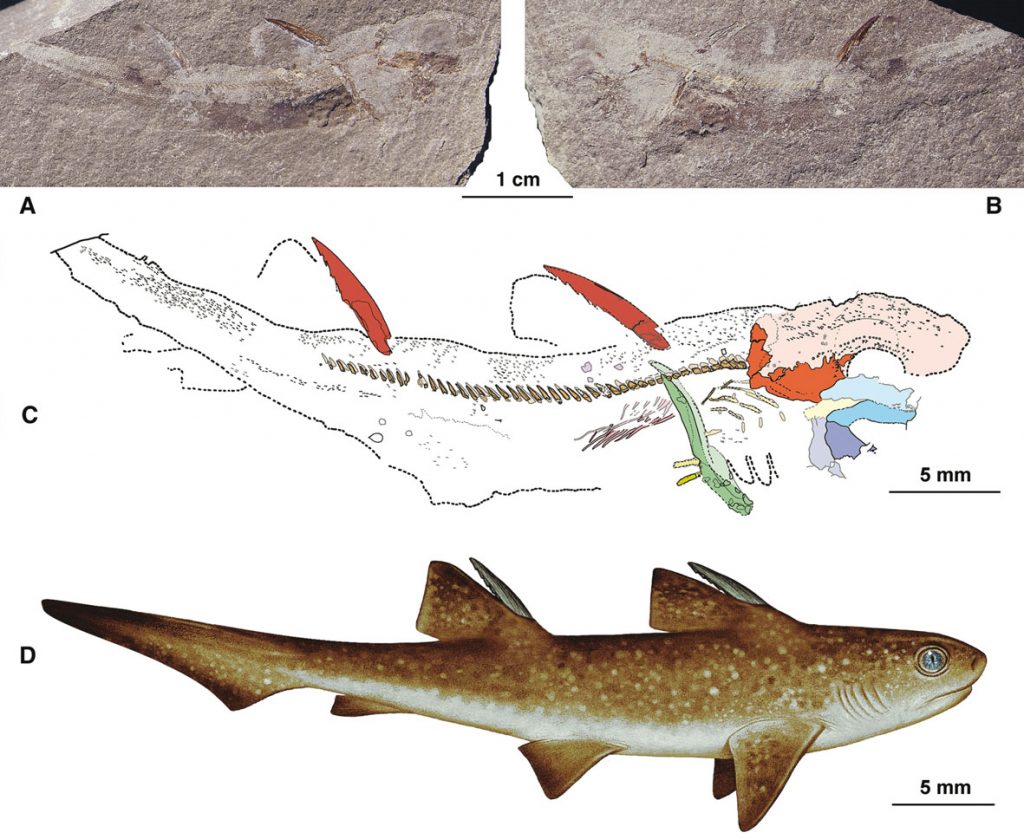
An exceptional fossil of a juvenile specimen of a dwarf shark species (cf. Lonchidion sp.) is the smallest shark of the world, fossil or Recent; measures 4’5 cms in total. Familiarly known as “Pablito”, it represents a very rare, occasional inhabitant of the Las Hoyas waters. From top to bottom, part and counterpart of specimen MCCM-LH-15500A,B (Museo de Paleontología de Castilla-La Mancha); camera lucida drawing of specimen above; life restoration. From Soler-Gijón et al. (2016 in Poyato-Ariza & Buscalioni, eds.), with permission from Verlag Dr. Friedrich Pfeil, München.
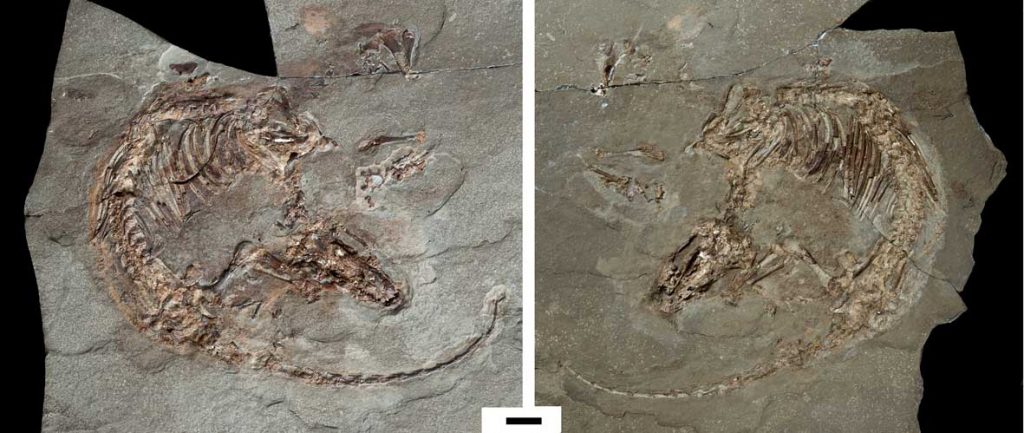
Spinolestes xenarthrosus, the complete mammal of Las Hoyas with soft tissue preservation. Holotype and only specimen, MCCM-LH-30000A,B (Museo de Paleontología de Castilla-La Mancha, Cuenca, Spain), original part and counterpart prior to preparation. Scale bar equals 1 cm. Photos T. Martin, with permission from Verlag Dr. Friedrich Pfeil, München.
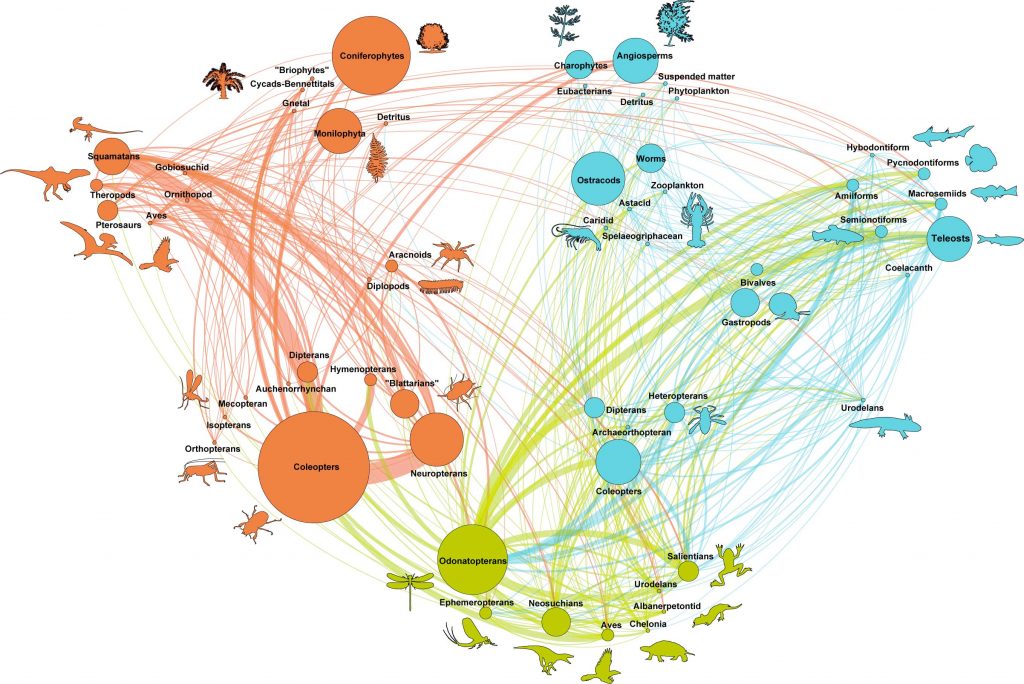
Resulting directed graph of the analysis with program Gephi, version 3. The graph is arranged according to environments and diversity of taxa, so that taxa are separated into three environments: aquatic, organisms continuously living in water, in blue; amphibious, organisms whose life-cycles occur both in the waters of the wetland and in the terrestrial environment, in green; and terrestrial, organisms who dwell in the forested areas, in orange. The relative diameter of each circle expresses the taxonomic diversity of the corresponding vertices (nodes); that is, the size of the circle reflects the number of taxa in the same trophic guild (i.e., merged into the same node). The lines in the graph display the trophic interactions, being line thickness proportional to the number of taxa with the same interactions. The resulting directed graph has 57 vertices (nodes) and 476 links.
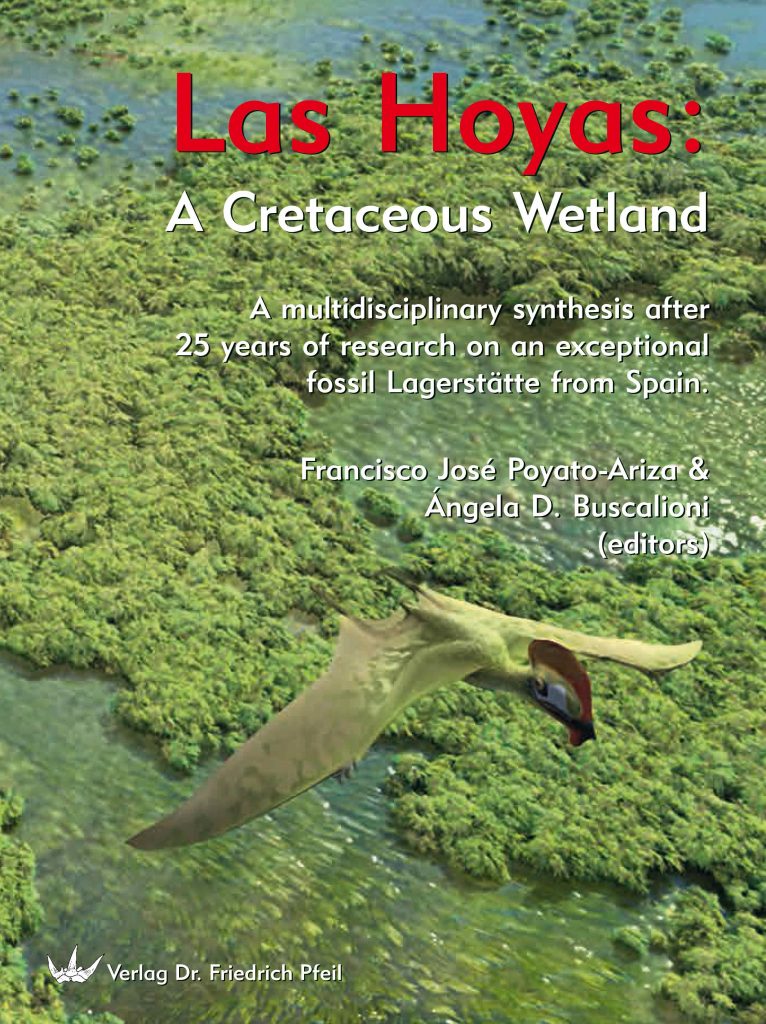
Cover of the new publication, showing part of the landscape restoration and a pterosaur flying by. Artwork by Ó. Sanisidro, with permission from Verlag Dr. Friedrich Pfeil, München.

